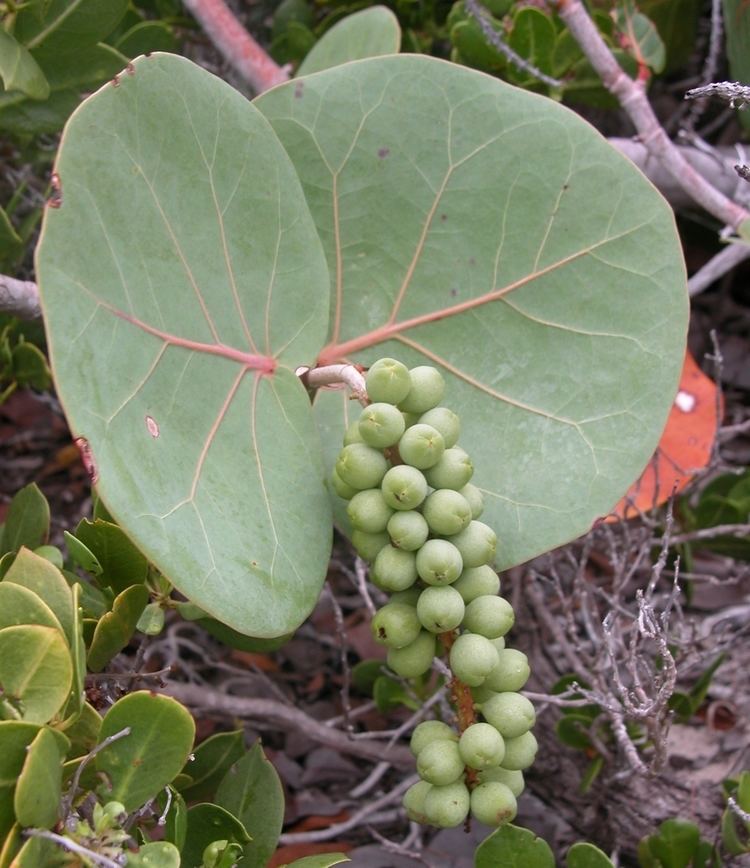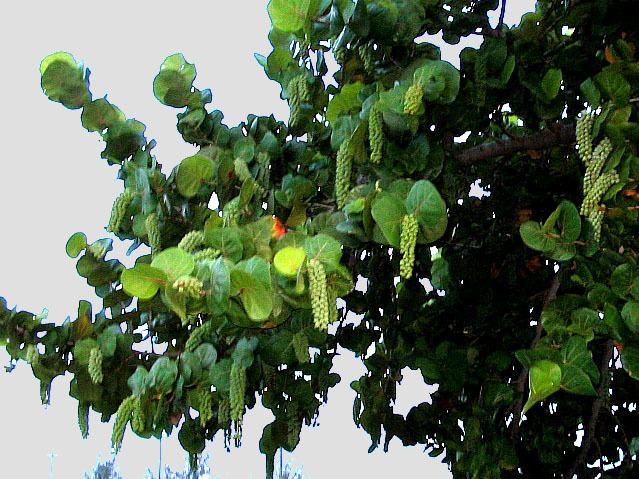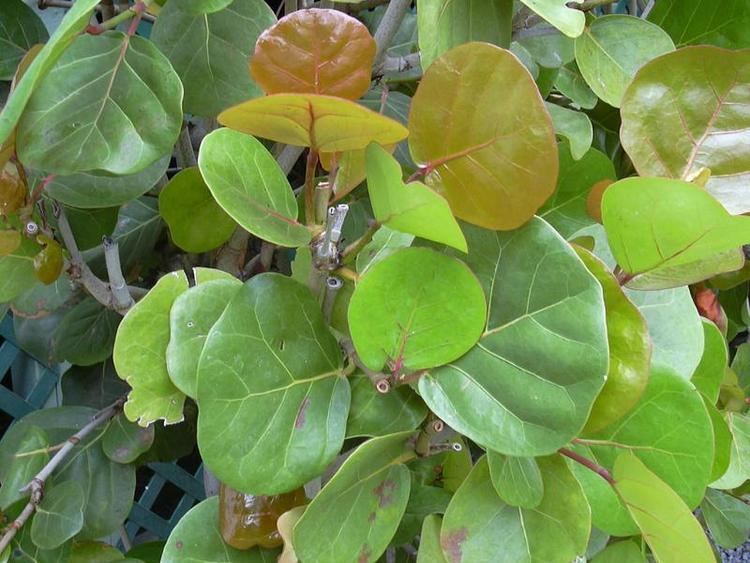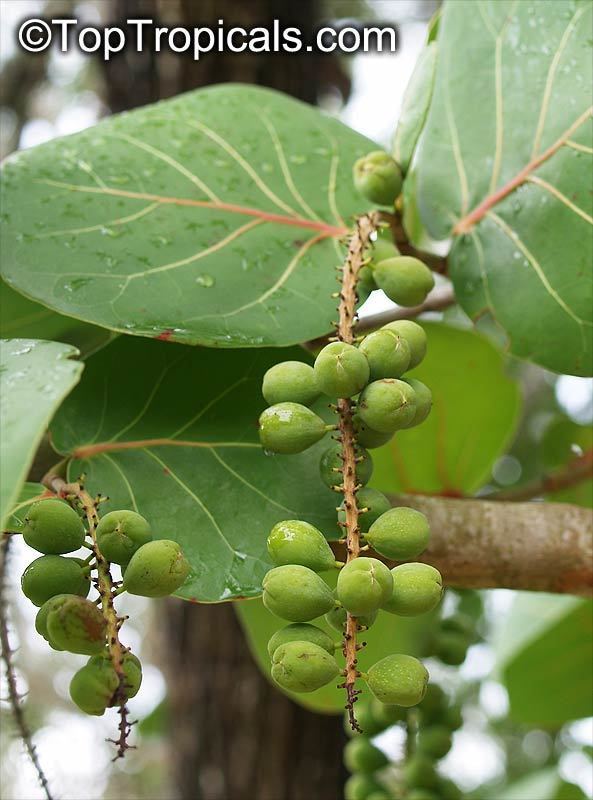Scientific name Coccoloba Rank Genus | ||
 | ||
Lower classifications Coccoloba uvifera, Coccoloba diversifolia, Coccoloba pubescens | ||
Coccoloba
Coccoloba is a genus of about 120–150 species of flowering plants in the family Polygonaceae. The genus is native to tropical and subtropical regions of the Americas, in South America, the Caribbean and Central America, with two species extending into Florida.
Contents

The species are shrubs and trees, mostly evergreen. The leaves are alternate, often large (to very large in some species; up to 36 in (90 cm) wide in C. pubescens), with the leaves on juvenile plants often larger and of different shape to those of mature plants. The flowers are produced in spikes. The fruit is a three-angled achene, surrounded by an often brightly coloured fleshy perianth, edible in some species, though often astringent.

There is no overall English name for the genus, although many of the individual species have widely used common names.

Coccoloba uvifera seagrape
Selected species

Sources:
Ecology

The genus includes several ectomycorrhizal species; for example, C. uvifera is apparently associated with at least the following macrofungal families Amanitaceae, Russulaceae, and Boletaceae. The species Coccoloba cereifera is notable for being restricted to an area of only some 26 square km on a single low peak near Serra do Cipó National Park, in the Brazilian state of Minas Gerais.[1]
Cultivation and uses
One species, Coccoloba uvifera (Seagrape) is commonly cultivated for its edible fruit, and the genus name is sometimes used to denote this species.
